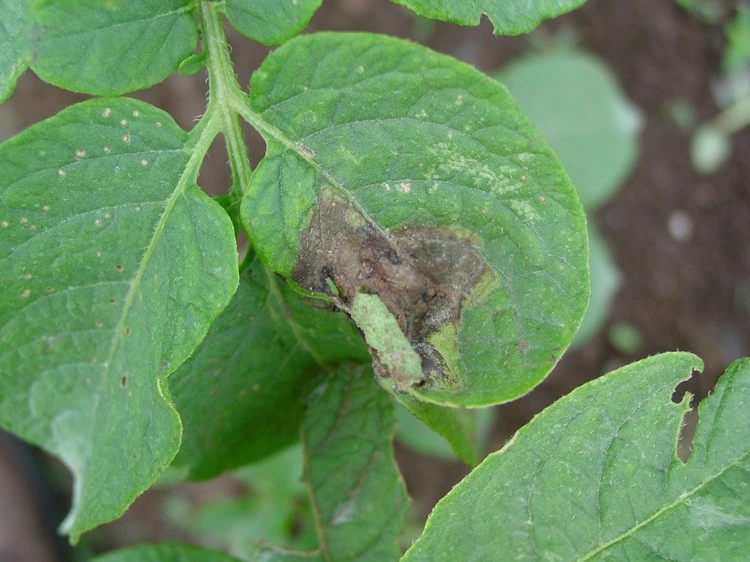Late blight is a dreaded potato disease that is a serious problem for gardeners as it causes significant yield and quality losses each year. It wilts and dies off the leaves and can also affect the fruit, causing it to rot. If the potato plant is left untreated, this disease can even kill it. However, there are measures you can take and natural methods to combat late blight on potatoes.
Combat late blight on potatoes: effective methods and home remedies
Late blight spores are airborne and thrive in warm and humid conditions. The disease usually appears in July or August and can destroy potato crops within a few days. In this article, we explain how you can use home remedies to fight and prevent late blight to save your potato crops and ensure a higher yield.
How can you recognize late blight?
The first signs of late blight are the brown, water-soaked leaf spots with a yellow border that spread from the center of the leaf. In humid conditions, there can be low spore production and a white fungal infestation can appear on the underside of the foliage.
The disease develops quickly and can also infect the tubers. Dark spots appear on the skin of the potatoes and the rot spreads into the potatoes, which eventually rot.
First aid for the infested plants
If your potato plants are infected with late blight, the first thing you should do is cut off the foliage and burn it as soon as possible. This will prevent the disease from spreading to neighboring plants.
If you do this early enough, there is a good chance the potatoes below ground will not be affected. However, test a few of these by picking them out of the ground. If these are also infected, they can no longer be saved and they should be burned.
Fight late blight on potatoes with baking soda
When you notice the first signs of the disease, you can treat the potato plants with a solution of baking soda to stop it from spreading. Mix 3 tablespoons of baking soda with one tablespoon of vegetable oil, one teaspoon of liquid soap, and 3 liters of water.
Remove the affected leaves and spray the plant with them to kill the spores. Be sure to spray the undersides of the leaves as well. Treat the potato plants with this solution daily in dry weather until all signs of the disease have disappeared.
Treat potatoes with milk and iodine
Treating potatoes with a solution of milk, water and iodine is a natural way to combat diseases and pests. The increased acidity of the solution creates an environment in which the fungus that causes late blight cannot survive and eventually dies. Another advantage of this method is that it creates a protective film for the plant and keeps pests away.
Mix two liters of milk with 15 drops of iodine and four liters of warm water and spray the affected potato plants immediately after the first signs of the disease. The prepared solution should be used immediately and cannot be stored. Treat the plants in the morning or evening to avoid burning the leaves and stems.
To prevent late blight, you can treat the potatoes at the base every two weeks with a solution of 250 ml of milk, 5 drops of iodine and a liter of warm water.
Prevent blight with garlic
You can make your own garlic solution to prevent blight from developing.
Crush 200 g garlic cloves and pour 1 liter of water over them. Let them soak for two days. Then add 2 tablespoons of liquid soap and two tablespoons of neem oil and mix well. Filter the liquid and dilute it with 10L of water. Use a sprayer to mist the potato plant every 7-10 days or after every heavy rain.
You can also spray the potato plants with nettle manure to strengthen them and prevent late blight. Find out here how you can make the effective remedy yourself.
What measures should you take to avoid late blight?
Late blight is caused by a fungus that is favored by humid conditions. Therefore, you should take the following measures to prevent the disease.
Select less susceptible varieties. Do not plant the potatoes too densely so that they are well ventilated. Water the plants in the morning so that they can dry out well during the day. Use nitrogen fertilizer to prevent late blight.
